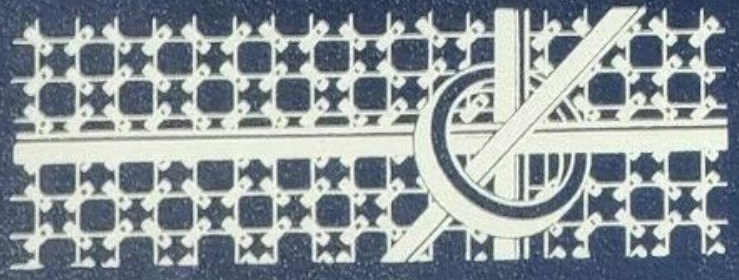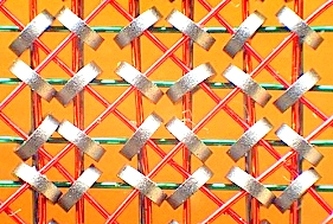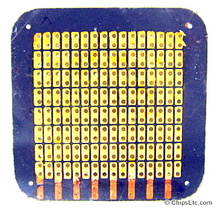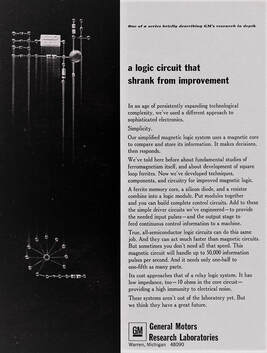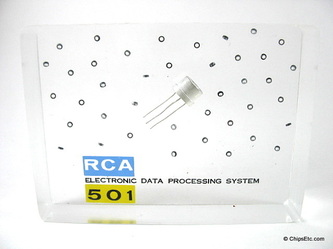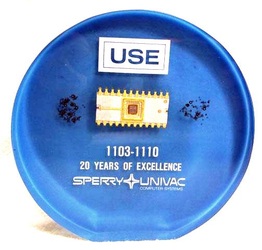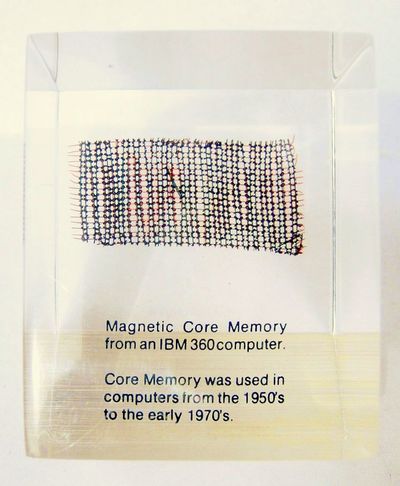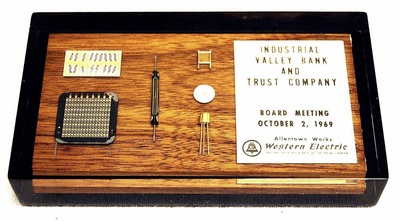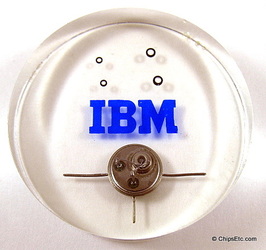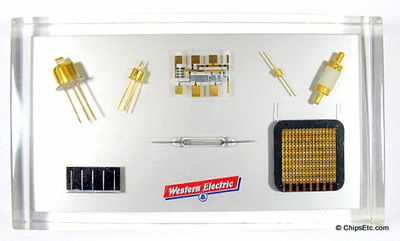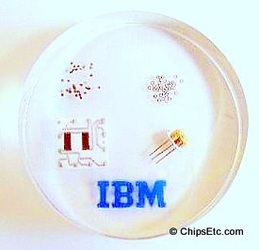
UNIVAC Core Memory (1960's)
The concept of core memory, a new form of nonvolatile (it can retain its contents indefinitely without power) solid-state computer memory, was first invented by Jay Forrester at MIT in 1949. In 1953, MIT’s Whirlwind computer became the first computer to use magnetic core memory.
Magnetic core memory was the main form of random-access computer memory during the 1950's until the mid 1970's. By 1975, transistor based semiconductor memory technology would eventually replace core memory.
Magnetic-core memory storage devices consisting of an array of magnetic cores - tiny ferrite magnetic "donuts" that could be magnetized in either of two directions to store one bit of data. The array of magnetic cores were held together in a grid structure, with wires woven through the holes in the cores centers. The core is magnetized by the flow of current in a wire passing through the core. Information is later read from the unit by sensing the magnetic charge. Each core in the array represented one bit of memory, and was either on or off, 1 or 0.
One benefit of Core memory was that it was not affected by radiation & EMP (electromagnetic pulses) which made it ideal for applications like first generation industrial programmable controllers, military installations and vehicles like fighter aircraft, as well as spacecraft, and led to core memory being used for a number of years even after the advance of semiconductor memory technology. (The Apollo manned space missions used magnetic core memory in their on-board computers for reliability.)
Magnetic core memory was the main form of random-access computer memory during the 1950's until the mid 1970's. By 1975, transistor based semiconductor memory technology would eventually replace core memory.
Magnetic-core memory storage devices consisting of an array of magnetic cores - tiny ferrite magnetic "donuts" that could be magnetized in either of two directions to store one bit of data. The array of magnetic cores were held together in a grid structure, with wires woven through the holes in the cores centers. The core is magnetized by the flow of current in a wire passing through the core. Information is later read from the unit by sensing the magnetic charge. Each core in the array represented one bit of memory, and was either on or off, 1 or 0.
One benefit of Core memory was that it was not affected by radiation & EMP (electromagnetic pulses) which made it ideal for applications like first generation industrial programmable controllers, military installations and vehicles like fighter aircraft, as well as spacecraft, and led to core memory being used for a number of years even after the advance of semiconductor memory technology. (The Apollo manned space missions used magnetic core memory in their on-board computers for reliability.)
